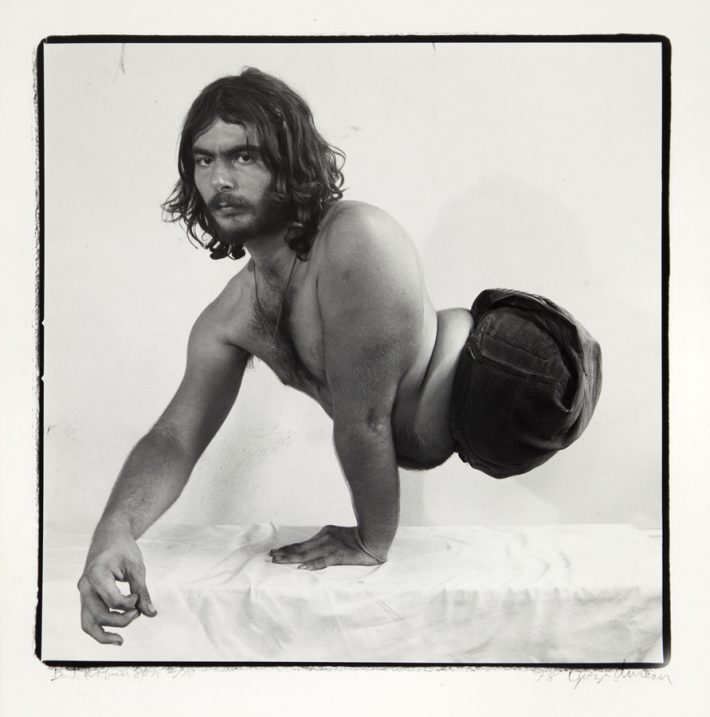Posted by Kevin Allman and Will Coviello via Gambit
George Dureau, the painter and photographer who captured French Quarter denizens for decades using camera and brush, died today around noon, according to Arthur Roger, the art gallery owner who was Dureau’s longtime friend. Dureau was 82 and had been in poor health.
“It’s been a long journey. It’s been a remarkably peaceful one. He was very restful,” Roger told Gambit this afternoon. “George maintained his charismatic charm.”
Roger last saw Dureau at a reception at his gallery in June 2013, “George Dureau: Paintings, Drawings and Photographs.”
Dureau, who suffered from Alzheimer’s-related dementia in later years, had been in an assisted-living facility since December 2012, but for years he lived in a studio at the corner of Barracks and Dauphine streets in the Lower French Quarter and was a fixture in the neighborhood. After he entered assisted living, a major auction of his work was held last year at Crescent City Auction Gallery to pay for his care.
Last July, Gambit art critic D. Eric Bookhardt appraised a major exhibit of Dureau’s work at Arthur Roger Gallery. That review is under the jump.
“Of all the artists this city has produced, there are probably none more representative of its iconic mix of flamboyant elegance and earthy eccentricity than George Dureau. Now 82, the painter and photographer was a French Quarter fixture for decades until his recent move to an assisted living facility. Despite his dexterously deft brushwork, most of his international reputation is based on a photographic oeuvre in which all aspects of formal technique are harnessed to his genius for conveying a striking humanistic presence. In this, he profoundly influenced one of his early studio assistants, a young man named Robert Mapplethorpe, who went on to become a New York art star. But Mapplethorpe could not match his mentor’s depth, as even that city’s art critics have noted in recent years. The work seen here is a classic Dureau sampler, and while it is easy to understand the popularity of his flamboyant paintings and drawings, it is his photographs that, while not for the faint of heart, will ensure his place in art history.
Perhaps ironically, Dureau was an established New Orleans painter when he began photographing his mostly male and often African-American models, a heterogeneous assortment of street people and outsiders that included muscle boys, dwarfs, amputees and occasionally bohemian women. In his paintings, they appeared as otherworldly creatures ranging from angels to centaurs in scenes rendered like bawdy, baroque interpretations of classical mythology in which Dureau himself often turns up as a satyr. But in his photographs, for instance, his portrait of B.J. Robinson (pictured), they appear as they really are yet as most of us would never see them, relaxed yet vulnerable, comfortable in the presence of someone who saw and appreciated their unique beauty and authenticity. It was Dureau’s singular genius to be able to meld Charles Baudelaire’s poetic otherworldliness with Walt Whitman’s utopian American egalitarianism in singularly striking images that reflect something of the soul of his city.”

